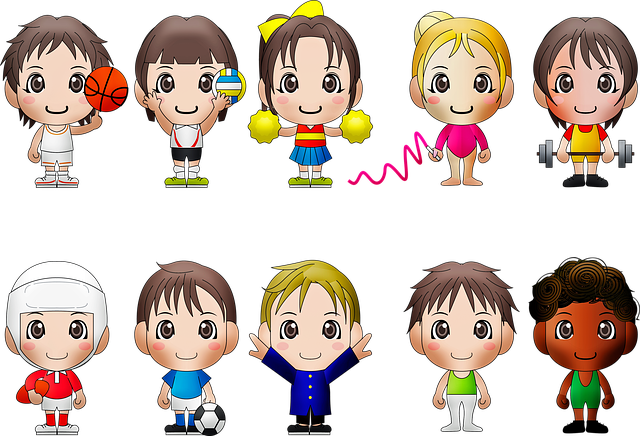Animation is a unique form of entertainment that leaves its viewers captivated, amused, and sometimes even educated. But as with any art form, there are certain things that should be avoided in order to create a successful and enjoyable experience for all. Here are some top tips from experts in the field of animation on what to avoid in your work.
Contents
Not Connecting Character Movements With Their Facial Expressions
One of the most important aspects of any animation is making sure that your characters’ movements are in sync with their facial expressions. This is what helps create a believable and relatable experience for viewers.

Without this connection, your characters will appear stiff, unnatural, and even comical. This is one of the main things that sets apart good artists from bad. As seen at https://www.wearefrantic.com/, the motion design of a character is extremely important, and facial expressions are key.
In addition to syncing up character movements and facial expressions, you should also make sure that the environment around your characters is in sync with their emotions.
Over-Animating a Scene
One common mistake that novice animators often make is over-animating a scene. This can create a jarring and disjointed experience for viewers, as it can be difficult to follow what’s happening on screen. In order to avoid this, aim to keep your scenes simple and easy to follow.
This will help ensure that your viewers are able to appreciate your work without being overwhelmed or confused. For example, if you’re animating a fight scene, make sure that each character’s movements are clear and concise and not overly complicated.
Adding Inappropriate Sounds
Another common mistake that animators make is adding inappropriate or jarring sound effects to their work. This can ruin an otherwise great animation and take away from the overall experience. When choosing sound effects, it’s important to make sure that they fit the tone and style of your work.
For example, if you’re animating a light-hearted scene, avoid adding gritty or violent sound effects. It’s also important to be aware of the context in which your sound effects are being used. For example, if you’re animating a love scene, avoid adding sounds that would be considered inappropriate for that context.
Improper Use of References
The use of references is crucial in the creation of a successful animation. They give you a step-by-step plan to follow as well as a thorough understanding of how the action could have been carried out in the real world.
The goal of using references is to draw inspiration from them and create a performance that is informed by them, rather than simply copying and pasting the exact movements and expressions onto a pre-existing character with no regard for personality or style.
Animators frequently fail to thoroughly examine the references. They only focus on the main arm and leg movements, ignoring the minor chest, hip, and thigh movements that make a massive difference in making a scene believable – resulting in unexpected movements.
Overcomplicating Things
One of the main goals of any animation should be to communicate your story or message as effectively as possible. This can be difficult to do when you’re trying to include too many elements into your work. When it comes to animation, less is often more.

Aim to keep your scenes simple and easy to follow, and avoid overcomplicating things. This will help ensure that your viewers are able to appreciate your work without being overwhelmed or confused.
Inconsistency
When it comes to animation, consistency is key. This means making sure that your characters’ movements, expressions, and personalities are consistent throughout your work. This can be difficult to do, especially if you’re working with a large cast of characters.
However, it’s important to remember that even small changes can have a big impact on the overall experience of your work. For example, if you’re animating a scene where a character is supposed to be sad, make sure that their movements and expressions are consistent with that emotion.
Forgetting the “Why”
One of the most common mistakes that animators make is forgetting the “why” behind their work. When animating, it’s important to keep in mind the purpose of your work and what you’re trying to achieve.
This will help ensure that your work is focused and cohesive. For example, if you’re animating a scene for a commercial, make sure that your work is aligning with the overall message of the ad.
All of these mistakes can be avoided. Animation is a complex process that requires an understanding not only of the technical aspects but also of the underlying principles that make animation work. By keeping these things in mind, you can avoid making common mistakes and create animations that are both effective and beautiful.






![Err_Connection_Reset Error in Chrome [RESOLVED] Fix Err_Connection_Reset Error in Google Chrome](https://howandwow.info/wp-content/uploads/2019/09/Fix-Err_Connection_Reset-Error-in-Google-Chrome.jpg)
![DNS_Probe_Finished_No_Internet Error [RESOLVED] Fix DNS_Probe_Finished_No_Internet Error](https://howandwow.info/wp-content/uploads/2019/09/Fix-DNS_Probe_Finished_No_Internet-Error.jpg)
![Err_Cache_Miss in Google Chrome Error [RESOLVED] Err_Cache_Miss in Google Chrome Error](https://howandwow.info/wp-content/uploads/2019/08/How-to-Fix-Confirm-Form-Resubmission-Error.jpg)








![Steam Missing File Privileges Error [RESOLVED] How to Fix Steam Missing File Privileges](https://howandwow.info/wp-content/uploads/2020/07/How-to-Fix-Steam-Missing-File-Privileges-Error-100x70.jpg)

![SIM Not Provisioned MM#2 Error [RESOLVED] SIM Not Provisioned MM#2](https://howandwow.info/wp-content/uploads/2020/03/SIM-Not-Provisioned-MM2.jpg)








